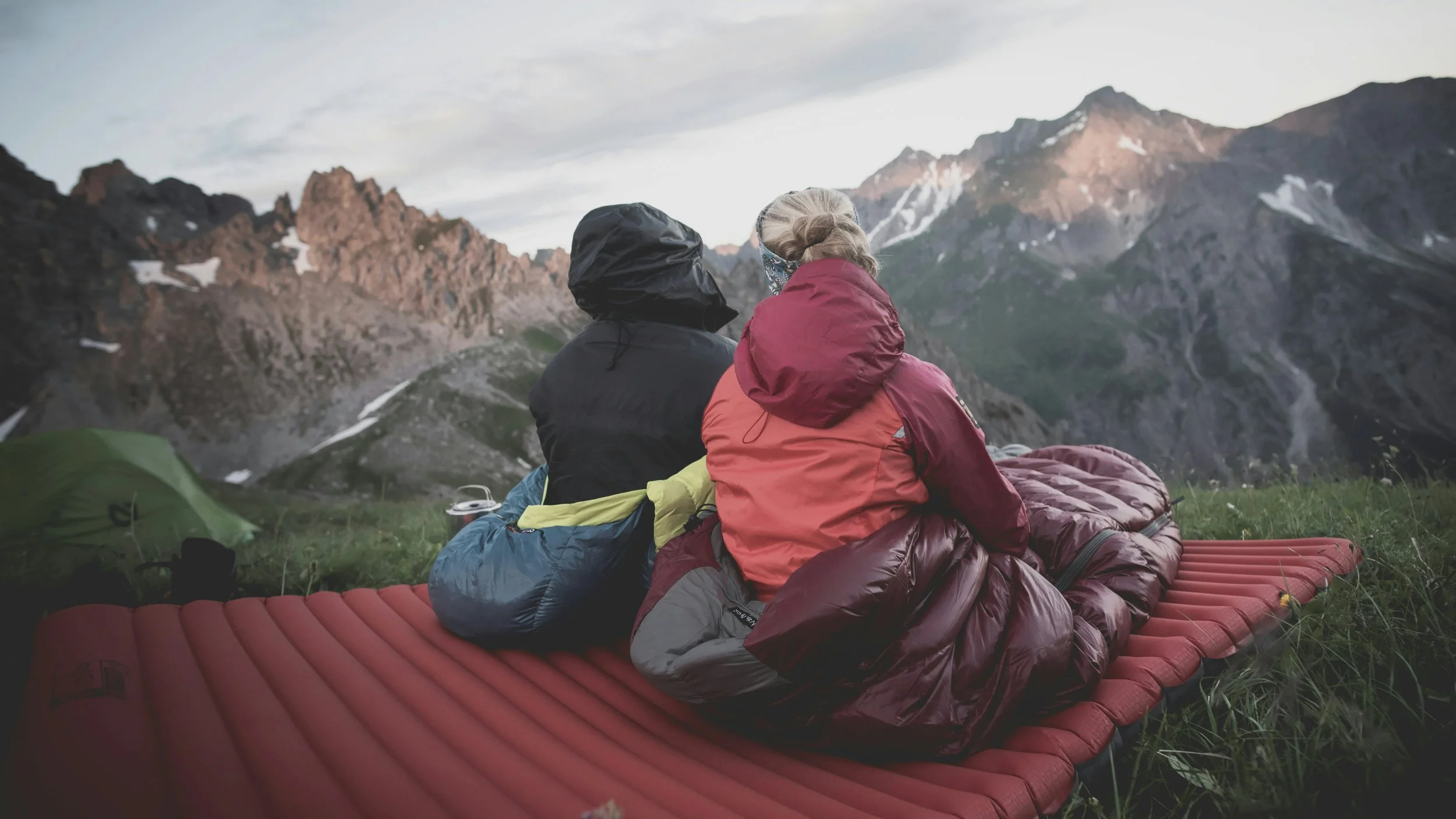Sleeping Bags vs. Sleeping Pads: What You Really Need
When you're planning your first camping trip, it's easy to assume that a sleeping bag is all you need to sleep comfortably outdoors. But ask any seasoned camper, and they'll tell you: the real MVP of a good night’s sleep might just be your sleeping pad.
So what’s the difference between sleeping bags and sleeping pads, and which one do you actually need?
(Spoiler: it’s probably both.) Let’s break it down.
What’s a Sleeping Bag For?
This may seem straight forward, but a sleeping bag is your insulation. Its job is to trap heat and keep you warm—especially at night when the temperature drops. They come in different shapes, sizes, and temperature ratings, so choosing the right one depends on your climate and comfort needs.
Key Sleeping Bag Features to Look For:
Temperature Rating: Choose a bag rated at or slightly below the coldest temps you expect.
Shape: Mummy bags offer better heat retention; rectangular bags give more room to move.
Fill Type: Down is lightweight and compressible; synthetic insulates even when wet.
Weight & Packability: Especially important for backpacking.
This Teton mummy-style sleeping bag is rated for as low as 0 degrees.
Pro Tip: Always check if the sleeping bag is comfort rated or limit rated. Comfort rating is the better gauge for beginners.
What’s a Sleeping Pad For?
A sleeping pad is your cushion and barrier. It provides comfort from the hard ground and insulation from the cold earth below. Even the warmest sleeping bag won’t help much if you’re losing heat to the ground underneath you.
Types of Sleeping Pads:
Foam Pads: Lightweight, durable, and affordable (but less comfortable).
Self-Inflating Pads: A good balance of comfort and packability.
Air Pads: Super comfy and compact, but may be less durable.
This KLYMIT Static V2 Inflatable Sleeping Pad is one of the best options out there.
Pro Tip: Look for an R-value (insulation rating) of 3 or higher for three-season camping.
Sleeping Bag vs. Sleeping Pad: What’s More Important?
If you're choosing between the two and can only bring one (or are on a tight budget), go with the sleeping pad first. Why?
It insulates from the cold ground
Adds comfort on rocky or uneven campsites
Prevents body heat loss, making your sleeping bag more effective
Pro Tip: Skipping a sleeping pad is one of the biggest beginner mistakes—don't learn the hard way on cold, hard ground.
What You Really Need
For most new campers, the combo of a moderately priced sleeping bag and a basic sleeping pad is the way to go. Here’s a quick starter pack:
3-season sleeping bag (rated ~30°F)
Self-inflating or foam sleeping pad with R-value 3+
Small pillow or stuff sack filled with clothes
Optional Add-Ons (If You Want Extra Comfort)
Compact camp pillow
Sleeping bag liner (adds warmth and keeps your bag clean)
Lightweight blanket or throw for cool evenings
Pro Tip: Test your sleep setup at home or in the backyard before your trip—especially if you’re camping with kids.
Final Thoughts: Invest in Your ZZZs
Camping should be an escape—not an uncomfortable ordeal. A sleeping bag keeps you warm, and a sleeping pad keeps you off the cold, lumpy ground. Together, they make the kind of sleep that lets you wake up ready for the trail, the lake, or just another cup of camp coffee.
Bottom line: Don’t choose one over the other. They work best as a team—just like s’mores and a campfire.
Thanks for reading,
JP
